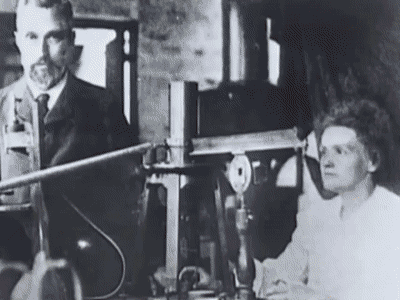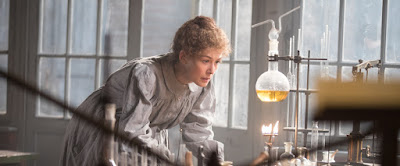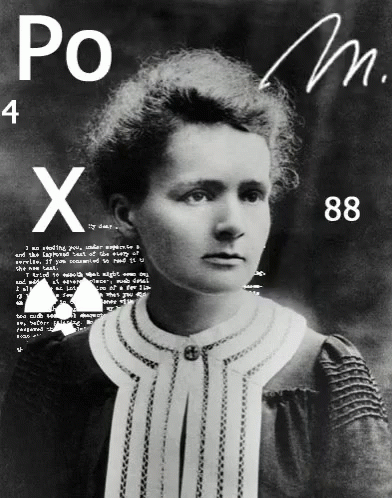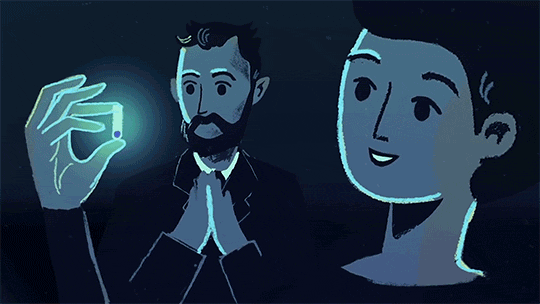Today (November 7, 1867) is the birthday of Marie Curie, winner of two Nobel Prizes for her discovery of radioactive elements such as Radium and Polonium.


Marie Salomea Skłodowska-Curie
was born on November 7, 1867, in Warsaw, Poland. His parents were famous
teachers Bronislava and Vladislava Skladowski. Maria and her older siblings
found it very difficult to live their lives as Maria's family had been involved
in the struggles for independence in Poland for generations. Maria's father,
Vladislava Skladowski, taught mathematics and physics. He was the director of two
Warsaw schools. After Russian authorities removed process teaching from
schools, he brought home the tools of his laboratory and explained their
operation to his children. Maria's mother, Bronislava, ran a boarding school.
But he gave up his job when Maria was born. He died of tuberculosis in Maria's
twelfth year.
At the age of ten, she attended a
boarding school called Maria J. Sikorska. He left with a gold medal on June 12,
1883. He spent the next year in the village with his father's family. He then
lived with his father in Warsaw. Then he conducted a little training class. As
a woman she was not enrolled in any of the institutions there for higher
studies, so she joined a Polish university called the Flying University, which
opposed Russian authorities and enrolled women. Maria made a pact with her
sister Bronislava. Accordingly, Maria will pay as much as she can for
Bronislava's medical studies. Instead, Bronislava will provide financial
assistance to Maria after two years. For this Maria worked as a home teacher in
Warsaw.

In the early 1890s, Bronislava
invited Maria to come and join him in Paris. But Maria did not go to university
because she did not have enough money to pay for it. It took another year and a
half for Maria to raise enough money. During this time Maria's father came to
her aid. Maria read a lot about everything during these times. Maria was with
her father until 1891. During this time Maria conducted training classes.
Educated at the University of Flying, he began his process science training at
a chemical laboratory at the Industrial and Agricultural Museum there. The lab
was run by Maria's cousin, Joseph. Joseph worked under the famous Russian
chemist Mandela.

At the end of 1891, Maria left
Poland for France. She stayed at her sister's house in Paris for a while. He
then rented a house near the university. He studied physics, chemistry and
mathematics at Sorbonne University. He lived in the cold of winter with the
little money he could get there. And sometimes he fainted. Mary studied in the
morning and took a training class in the evenings. In 1893 he received a degree
in physics. He then worked in Professor Gabriel's laboratory. During this time
he continued his studies at Sorbonne. He received his second degree in 1894.
Mary began her studies in Paris. He was the first to study the magnetic field
of leadership. That same year Pierre Curie came into Mary's life. What brought the
two together was their common interest in science. Pierre was a teacher at a
physics and chemistry school. Professor Joseph Kowalski introduced the two. He
did so because he knew that Mary wanted a larger laboratory and that Pierre had
the opportunity to access such a laboratory.

The intense interest in science
that existed between the two brought the two closer. Pierre asked Mary to marry
him. Mario said he planned to return to his homeland. Pierre himself said he was
ready to come to Poland with him. It was during this time that Mary came to
Warsaw and visited her family. Until then he was thinking of working in Poland
in his field. But only then did he realize that it was an illusion. Because she
was a woman at the University of Krakow, she was not offered a job there. At
this point, a letter came to Mary from Pierre. That prompted him to return to
Paris. Inspired by Mary, Pierre wrote an essay on magnetism. That gave him a
doctorate. And it elevated him to a professor at his school. They were married
on July 26th. Both had two hobbies, long bike rides and trips abroad. These
brought the two of them even closer.

In 1895, Rontgen
discovered X-rays. But no one at the time knew how it formed. In 1896 he
discovered that pecking fingers also emit uranium salts, similar to X-rays. He
also saw that these rays came from uranium and not from outside. Mary examined
X-rays for a research paper. Mary explored uranium using an innovative skill.
Fifteen years ago Pierre and his brother developed an instrument called the
electrometer. It detects electricity very well. Using this, Mary discovered
that uranium rays generate electricity in the surrounding air. Using this, Mary
discovered that the radiation exposure of uranium depends on its magnitude. He
also operated under the hypothesis that radiation must come from molecules.


In 1897 Mary gave birth to a
daughter, Irene. Queries do not have a good laboratory. They conducted their
research mostly in a hall near the school of physics and chemistry. The hall
did not have good ventilation or waterproofing. They are unaware of the dangers
of dealing with radiation. Therefore, they are not aware of the consequences
that will befall them in the future. The school did not give them any funds.
But some of the mining companies and other companies gave them financial help.
Mary's radiological studies contained two uranium minerals, pitchblende and
calculate. Through her electrometer studies, Mary found that pitchblende had
four times more radioactive activity than uranium, and calculate twice as much.
He found that both minerals must contain an element other than uranium. Thus he
made efforts to find other elements with radioactive energy. In 1898 he
discovered that thorium also had radioactive energy.

Mary knew the need to publish her
discovery as an article. Therefore, on April 12, 1898, his professor Lipman
submitted an article on his discoveries to the Academy. At the time no one
noticed how important a sentence Mary had recorded in her article. What it does
mean is that the radioactive activity of pitch plant and chocolate is very
high. This indicated that they must contain an element other than uranium. In
July 1898 Mary and her husband published an article. In it,, they reported the
discovery of a new element. Mary named it ‘polonium’ to glorify her homeland.
On December 26, 1898, another element was discovered and named radium. They
also coined the term radioactivity. To prove their discovery beyond any doubt,
the Marys set out to extract polonium and radium in pure purity. Pitchblende is
a mineral that contains a lot of elements. Polonium was a little easier to
find. Because chemically it resembled bismuth. And it was the only element in
Pitchflend similar to bismuth. But the radium was hard to find. Because it
resembled barium. And a lot is going on in Pitchfork. Finally, in 1902,
0.1 g of radium chloride was extracted from a ton of pitchblende. In 1900, Mary
became the first female professor at Ecole Normale Superior. In June 1903 Mary
received her doctorate from the University of Paris. Meanwhile,, a new factory
began to develop radium. Curies do not make any profit in this business as it
is not patented.

In December 1903 the Royal
Swedish Academy of Sciences awarded the Nobel Prize in Physics to Mary, Pierre
and Becquerel for their most important research on radiation. Pierre died in a
road accident on April 19, 1906. This caused great harm to Mary. On May 13,
1906, the Sorbonne University of Physics awarded Mary the position Pierre held.
Mary accepted the position that a world-class laboratory could be built in
Pierre's memory. Mary Sorbonne became the first female professor at the
University. In 1911 the Royal Swedish Academy of Sciences awarded Mary the
second Nobel Prize in Chemistry. The award was given in recognition of Mary's
discovery of the elements radium and polonium, the extraction of radium, and
the study of its properties. Marie Curie was the first woman in Nobel Prize
history to receive that prize. He is also the first person to win the Nobel
Prize twice and in different fields.

Mary last visited Poland in early
1934. Maria Slotaska Marie Curie, the recipient of two Nobel Prizes, passed away on
July 4, 1934, at the age of 66, at the Sanchelimos Sanatorium in Mar Pachy,
after years of exposure to radioactive aplastic anaemia. He has test tubes with
radioactive isotopes in the bag. And he has them on his desk. He did not wear
proper equipment while working as a radiologist in hospitals during the war.
That is why he was in danger. Mary was buried in Skeux with her husband Pierre.
Sixty years later, in 1995, the tombs of the two were transferred to the Paris
Pantheon in memory of their achievements. Mary is the only woman who has ever
been honoured like this. His documents from the 1890s are considered too
dangerous to handle. Because they have radioactive exposure. Even his cookbook
is highly radioactive.
Source By: Wikipedia
Information: Dr. P. Ramesh, Assistant
Professor of Physics, Nehru Memorial College, Puthanampatti, Trichy.


.jpg)

No comments:
Post a Comment